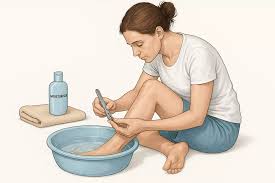Biologic therapy offers targeted solutions that go beyond traditional medications. By harnessing living cells or proteins to interact with specific parts of the immune system, biologic treatment provides precise treatment with the potential for fewer side effects. Understanding how it works, what conditions it addresses, and its benefits and risks gives patients and providers the knowledge needed to make informed care decisions.
What Is Biologic Therapy?
Biologic therapy is a medical treatment that uses natural substances from the human body to promote healing. These substances can come from the blood, bone marrow, amniotic fluid, and umbilical cord tissue. Medical professionals harvest and concentrate these materials to create powerful healing treatments.
The therapy works by using the body’s own repair mechanisms. When concentrated, these natural substances contain much higher levels of healing factors than those found naturally in the body. This concentration helps damaged tissue repair itself quickly and effectively.
How Does It Work?
The therapy works by delivering concentrated healing factors directly to injured areas. These substances include growth factors, proteins, and special cells that can transform into different types of cells. When injected into damaged areas, they stimulate the body’s natural repair processes.
Platelet-rich plasma (PRP) is one type of biologic therapy. This treatment uses concentrated platelets from your own blood. The concentrated platelets contain more healing factors than regular blood. When injected into injured tissue, these factors help speed up the healing process.
Another type uses special cells that can become any type of cell in the human body. These cells help rebuild damaged tissue while also reducing inflammation. The treatment can be given through injections or used during surgical procedures to enhance healing.
What Conditions Does It Treat?
Biologic therapy has shown significant effectiveness in managing and treating a variety of medical conditions. Some of the most common conditions treated with this approach include:
- Osteoarthritis: It promotes cartilage repair and reduces joint pain.
- Tendon injuries: It aids in the regeneration of tendon tissue and alleviates inflammation.
- Sports injuries: It facilitates faster recovery and improved tissue healing.
- Chronic wound conditions: It enhances the healing process of wounds that are slow to recover.
- Autoimmune diseases: It helps regulate immune responses and reduce harmful inflammation.
This wide range of applications underscores the versatility and potential of biologic treatments in addressing acute and chronic conditions.
What Are Its Benefits?
Biologic therapy offers several key advantages over traditional treatment methods. The treatment uses natural substances from your own body, which reduces the risk of allergic reactions or rejection. The therapy can help patients maintain their joints longer and potentially delay the need for joint replacement surgery. This is helpful for younger patients who want to preserve their natural joints for as long as possible.
Biologic treatments do have some limitations and risks to contemplate. Not all patients respond equally well to the treatment, and results can vary between individuals. Some patients may experience temporary soreness or swelling at the injection site. The treatment may also require multiple sessions to achieve optimal results.
Explore Biologic Therapy Options Today
Biologic therapy offers a natural approach to healing that can help you maintain an active lifestyle. The therapy treats a wide range of conditions affecting joints, tendons, and other tissues throughout the body. The treatment uses your body’s own healing mechanisms to repair damaged tissue and reduce pain. For joint pain or injury, schedule an appointment with a trusted healthcare provider to discuss biologic treatments and determine if this treatment approach is right for you.














